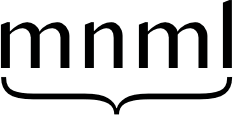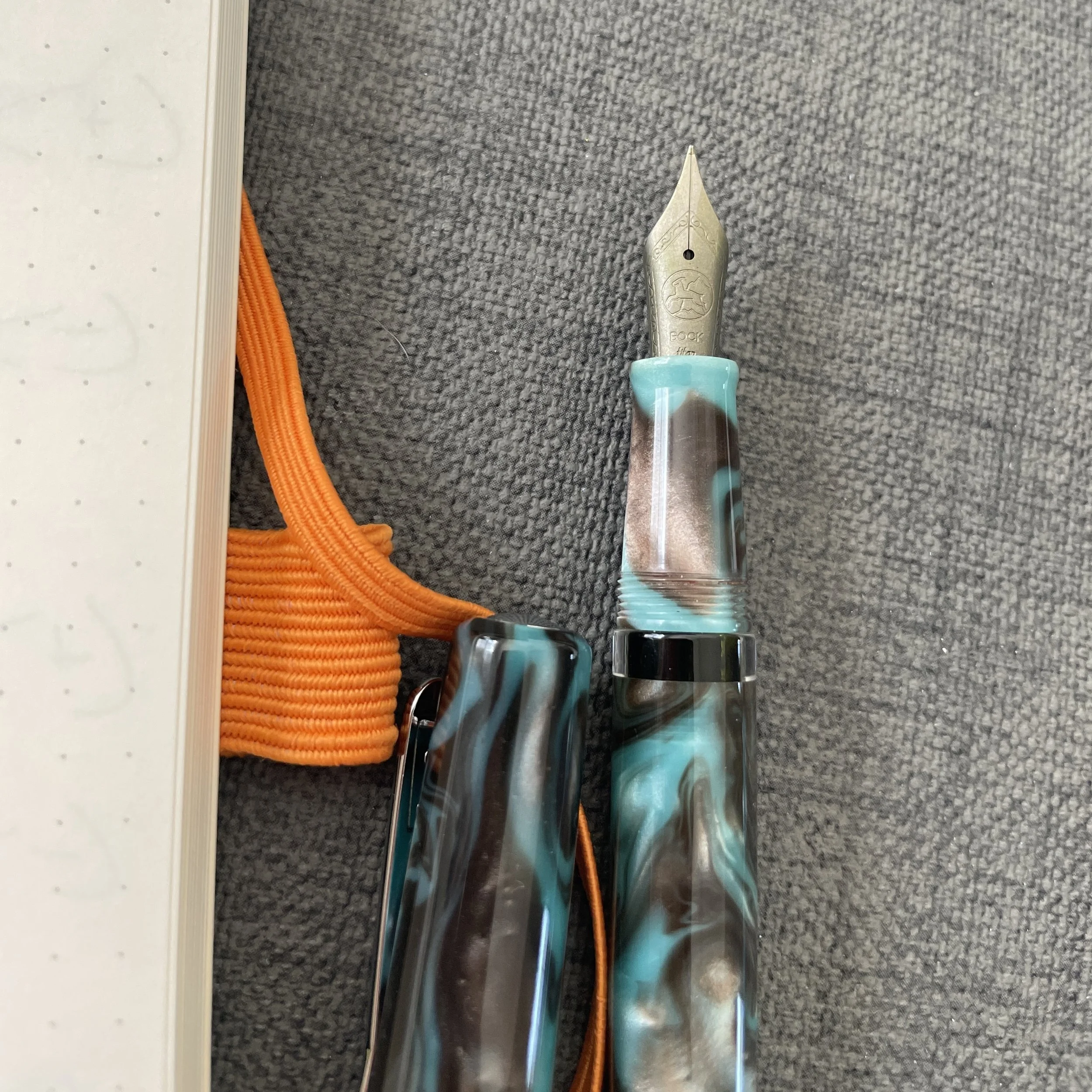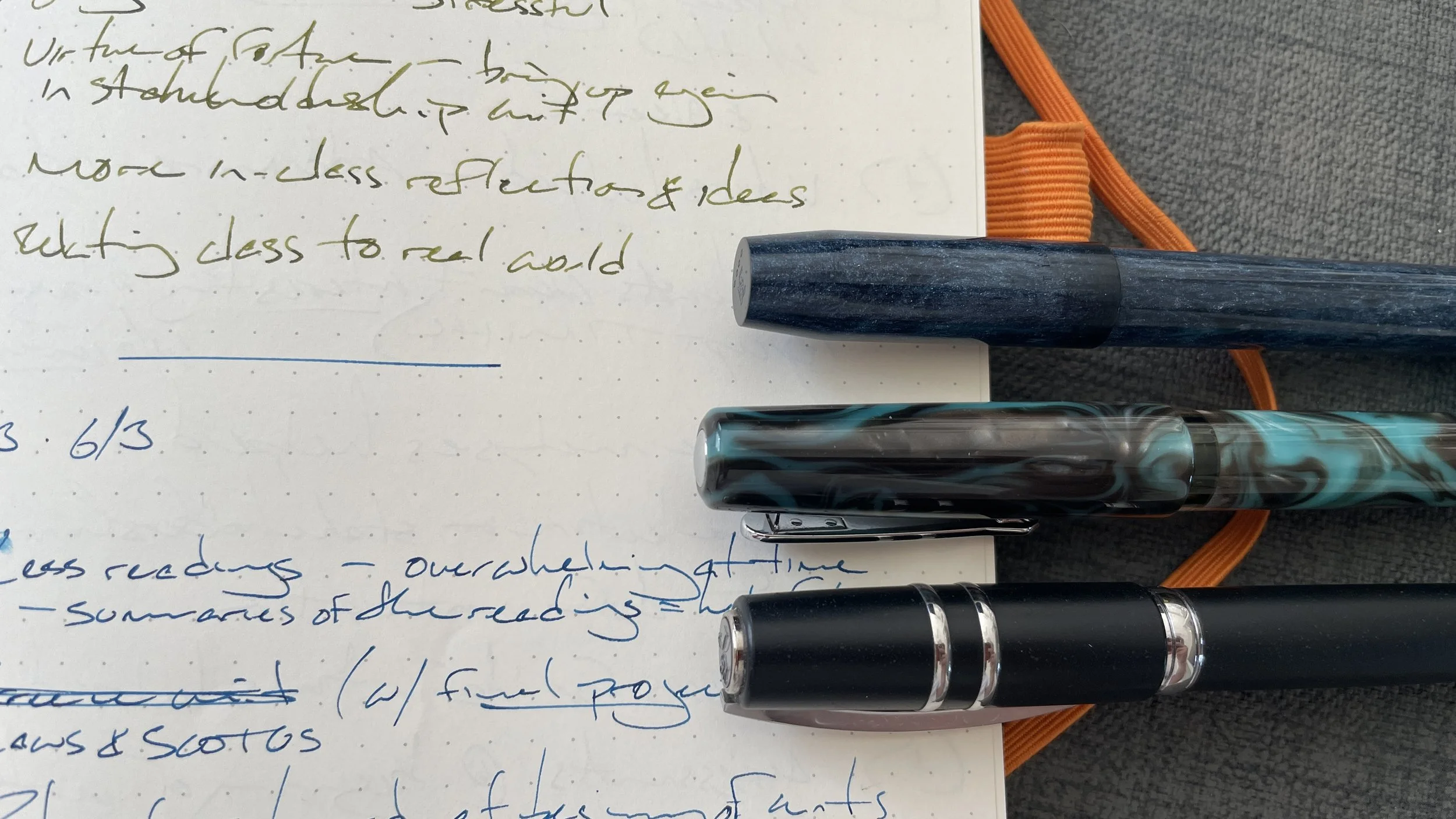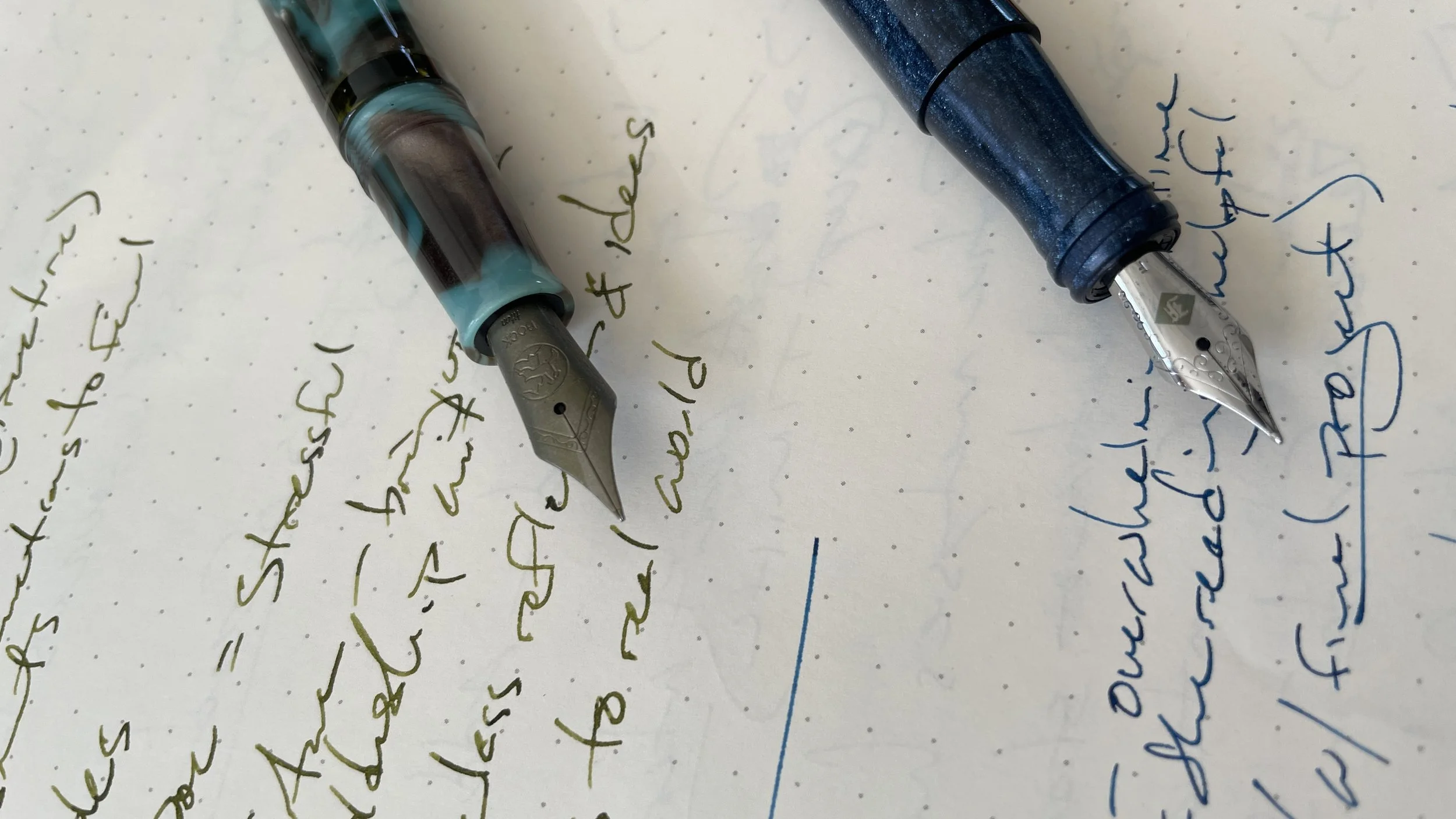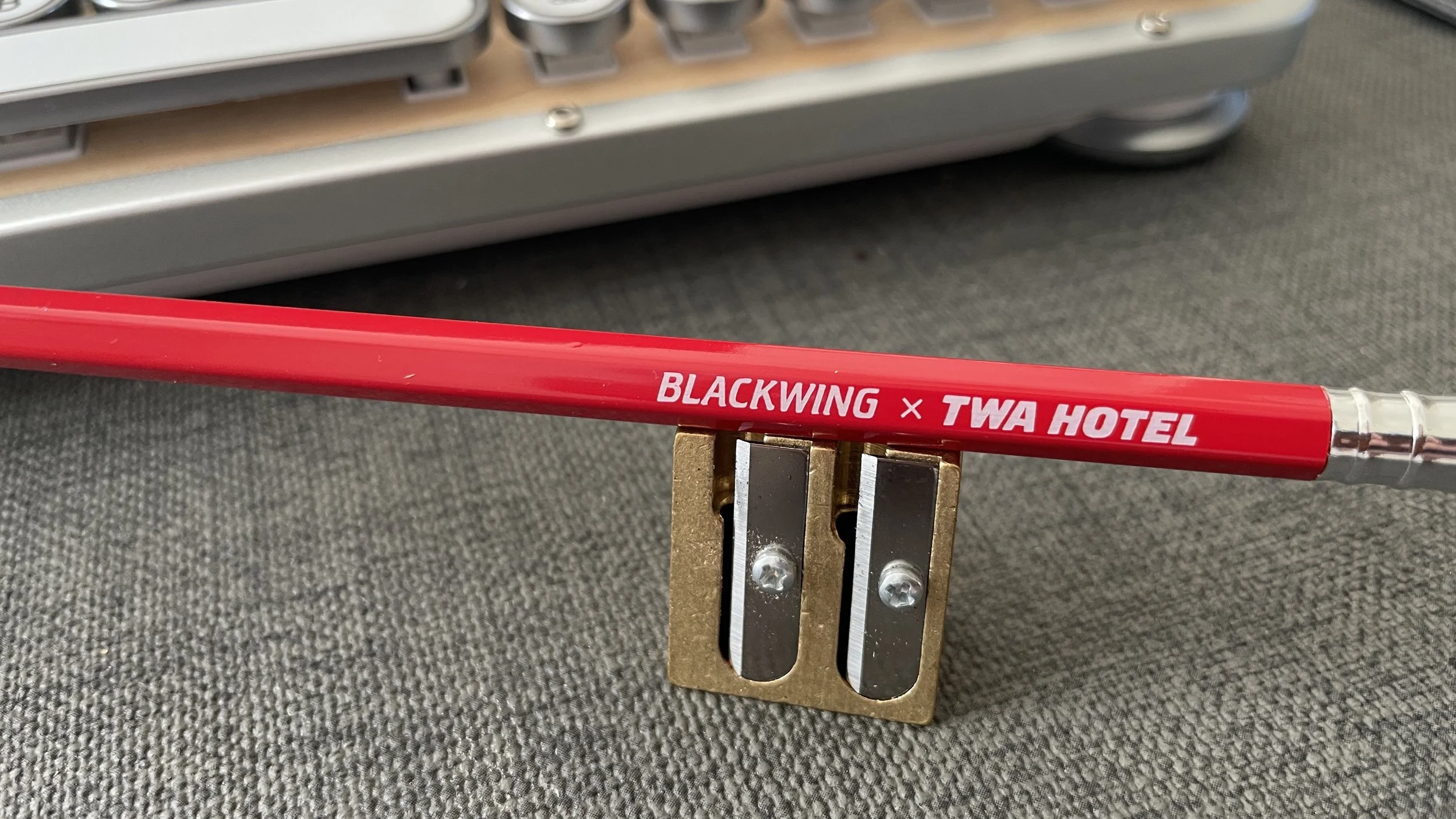Flexibility and searchability in taking notes
Notes are fantastic. They help in the moment. Writing is thinking after all. Notes especially help to connect ideas to one another, often in messy and complex ways. They’re useful because they’re flexible.
And notes are truly useful when you revisit them, often months or years later. To compare to what you’re doing or thinking in the present to more longstanding ideas you’ve recorded. They’re also useful because they’re searchable.
My students struggle with this. They take notes for hours each week and then study or write research papers using completely different resources. Often, simply re-reading their books as if they never took notes at all. Their class notes are left to grow old and yellowed under whatever rainbow all our lost things escape to.
Many of my students have no easy way to quickly or painlessly find old notes on the events or questions they want help remembering now — because their notes aren’t searchable. Others take digital notes but are unfamiliar with how to use their computers’ OS to find their notes later on.
So: effective notes are both flexible and searchable. But not equally so. Effective notetaking, for me, lives on a continuum between flexibility and searchability. New notetaking strategies try their best to chart a happy medium between these two poles.
Flexibility is an analog asset. To the left, analog notetaking offers a blank slate. I can quickly turn blank paper into an ordered list or a nuanced mind map. Quickly sketch a geographical map connecting events or diagram body parts. Whatever you need, in whatever shape you need, comes lives at the flick of your pen or pencil.
Analog notes are tailor-built for flexible recording. Handwritten notes, in particular, offer a fluid flexibility that typed notetaking software struggles to match. No new windows or app switching required.
Searchability is a digital database. To the right, digital notetaking offers means to type your words into a file system of one sort or another. From Apple’s Notes app, to Evernote, to Microsoft’s OneNote, digital notetakers record thoughts in linear formats. My favorite, Bear, allows for pictures and links and fancy checkboxes — as do many other apps.
Digital notes are saved as code, and so are endlessly searchable. Notes can be searched by the words you recorded, regardless of how long ago or recently you typed them.
Digital notes can also be chunked into categories for searching broader themes. Keywords, tags, and folders all make such efficient searching possible. The notes you want, it feels, come to you.
Straddling the center. I continue to grapple with balancing along the continuum between flexible records (analog) and searchable records (digital). Analog writers have spent centuries squaring the circle of rendering their notes reliably retrievable.
John Locke famously wrote out thorough instructions on how to use complex alphabetic indexes and detailed headings to render commonplace notes searchable. In the 1650s. Wipe that dust off your shoulder.
The tricks, hacks and buyable flags bullet journalers and notetakers currently experiment with are similarly designed to shift the bar rightward — toward more searchable, retrievable analog notes. One excellent example is Ryder Carroll’s threaded page numbering system.
Exciting digital advancements also aim to drag digital notebooks closer to the analog pole of the continuum. Away from typing and towards handwriting.
Digital pens (think the Apple Pencil and Neo Smartpen) convert computers into notebooks — and are in the early stages of developing reliable ways to convert handwritten jottings into searchable text. Even the design wizards at Lamy have taken note of this balancing act. They make their own digital pen.
For me, I enjoy the poles. There are serious drawbacks to both.
I doubt there is one single place to plot myself along the continuum. Learning to pick the balance that works best for the specific project in front of me is still the best approach. But bridging the gap between truly flexible notes and searchable notes — that would be a game changer.
This week’s Inked Tines update includes last week’s currently inked writing tools.
Toolset
Pens. Far and away, my favorite pen-and-ink combo last week was the Narwhal, inked with Colorverse’s Brane. The combination of wet writing, wide “EF” line width (more like a wide F), and shading ink brought a smile to my face. And shouldn’t writing do that? Discussion notes, reading notes, journaling, scratch notes. Empty.
Visconti Homo Sapiens (EF) — ?? Excellent on coated, smooth papers. Inconsistent on more absorbent papers. Great in my Hobonichi. Undisciplined lines I’m my Rhodia. Task management, scratch notes, coding notes, reading notes, and meeting notes.
Visconti Homo Sapiens (F CI) — ?? Shogun’s wetness took the edges off of this sharp grind. Worked surprisingly well during quickly jotted notetaking in my final classes. Soft nib is great fun during long writing sessions. Discussion notes, reading notes, journaling.
Franklin-Christoph 45 (F) — 1/2. Compact pairing. The 45 has a slim profile. And the F nib delivers a disciplined EF/F line. Add Extra Dimension’s sheen: perfect for accenting detailed notes. And the silent one-and-a-half turns to uncap lends this pair to accenting meeting notes without distraction. Journaling and reading notes, too.
Montblanc 146 (EF) — 1/3. Wrote increasingly well on increasingly absorbent papers. 441’s brightness jumped off the page — perfect for marking student papers, and for editing my own. Also: journaling.
TWSBI 580-AL (1.1 mm) — 1/4. Performed well when used. A deluge of a pairing. Too wide for the detailed notetaking that absorbed my working time. This combo sat largely unused. Some journaling, though.
Pelikan m805 (F CSI) — 2/5. My go-to pocket carry by Friday. The F line was true-to-size and so dried quickly enough on Field Notes paper to avoid smearing in my A6 notebook. Importantly, Exupéry kept students’ eyes on my paper when sketching out their ideas for their final projects. A great teaching notes combo. Also: journaling and reading notes.
Notebooks. Work bujo. Rhodia Goalbook (A5). Seven new pages this week. The weeks begins with a two-week task management spread and otherwise comprises five pages of notes: student discussions and coding scratch notes. The work bullet journal stands at 68 used pages. So close.
A favorite end-of-year activity to run with students is what I call a dialogic reflection. A three-pen activity. Added value.
The class alternates sharing one activity or reading that they would use again were they to teach the class next year and one activity/reading they would replace for next year. My young scholars debate the merits of their classmates’ suggestions as they will. Helps them to see the big picture of my curriculum. Teaching is awesome.
I sit as quietly as I can and take notes. Round nibs work best given the fast pace of students’ reflections. The pacing makes swapping pens for positive and negative comments challenging. So, instead, I exchange colors by class section.
This year, I used the generous Narwhal EF and the disciplined Franklin-Christoph F for my large sections.
My smaller, more thoughtful third section proceeded slowly enough that I was able to comfortable use the crisp Visconti F cursive italic. Shogun is wet enough to accommodate the occasional inadvertent rotation.
Sadly, they — at no point — suggested buying more pens
Journal. YT Bindery Yu-yo (A5). Another three entry week. Three entries seems to be a natural balance point. All three amount to ten additional pages in my journal. As of this week, I’m also ten pages from completing this little hand-made notebook. Three cheers for symmetry.
Last Sunday’s entry was written on two occasions. Two paragraphs of morning pages with the Pelikan and its personable F cursive stub italic grind. Another two paragraphs revisit the day’s events, written Sunday evening. I tapped the rainstorm-wet TWSBI pairing.
The entry ends with a transcription of two stanzas from Kristian Saras Matsson’s despairing “The Gardener.” Written, fittingly, with the grass-green Brane and Narwhal combination. I dig a theme.
Wednesday’s entry follows suit. Two inks: Extra Dimension and Sailor’s 441. Housed in a F and EF nib, respectively. The entry ends with an excerpt from Rupi Kaur’s Home Body — focused on “Productivity Guilt.” Quite human.
The third entry lists standout tracks from Chillhop’s newest seasonal lo-fi playlist. The playlist is linked below. A great friend and I listened together. We compared notes on our favorite tracks at the end. Fun times. And a return of Montblanc’s Saint-Exupéry.
Written dry. The Narwhal ran dry last Saturday after a respectable month in my currently inked.
Respectable in front, playful in back
Introducing my titanium Bock nib to the Narwhal upgraded this pen into an excellent longform writer — for me. Smitten.
Newly inked. I stuck with my original seven pairings. Evidence that I had a well-rounded currently inked setup. Boo-ya.
The collection
Incoming / new orders. The embargo stands. Long live the pre-pen show embargo.
Outgoing / trades or sales. I’m waiting until the school year is completely over to revisit pens I’d like to move on to new homes. More to come in a later post.
Currently reading and listening
Fiction. I picked up two new books and started one. Both are steps outside of the Redwall pantheon. Breaths of new air.
I started reading Cixin Liu’s The Three Body Problem last week. I stand 30 pages in as of this post. Liu starts the story in the midst of a cultural revolution wherein academic inquiry and publically performing allegiance to the Cultural Revolution are at odds.
Thoughtful. Philosophical. The promise of aliens. My cup of tea.
Aliens & Pencils, no showing in libraries near me
Ada Palmer’s Too Like the Lightning is the science-fiction selection for a small summer reading group with my good friend Justin — who is a scriptwriter. We bring different perspectives to our readings of fiction.
More on this when we start.
Nonfiction. I finished Christopher Hitchens’ God is not Great. He offers an interesting argument. Hitchens’ lack of clear structure required me to flip back and forth within each chapter and rebuild his arguments’ outlines in the margins.
My Blackwing Natural wore away in the course of creating chapter outlines across the margins. I had arrived at the branding foil near the eraser.
I replace a pencil once it’s shorter than my thumb. A subjective measure based solely that length being so short it’s uncomfortable for writing.
The replacement is the Blackwing TWA edition. It’s a softer core — so darker and quicker to dull. On the bright side, that promises to show similarly quick progress as I will need to sharpen often.
Pre-workout
Music. ChillHop’s Summer Essentials compilation released. As has become tradition, my friends and I arranged a watch party.
This season sports a fun variety of jazz-infused, indie-infused, and hip-hop-infused lo-fi songs. A simply excellent productivity soundtrack.

